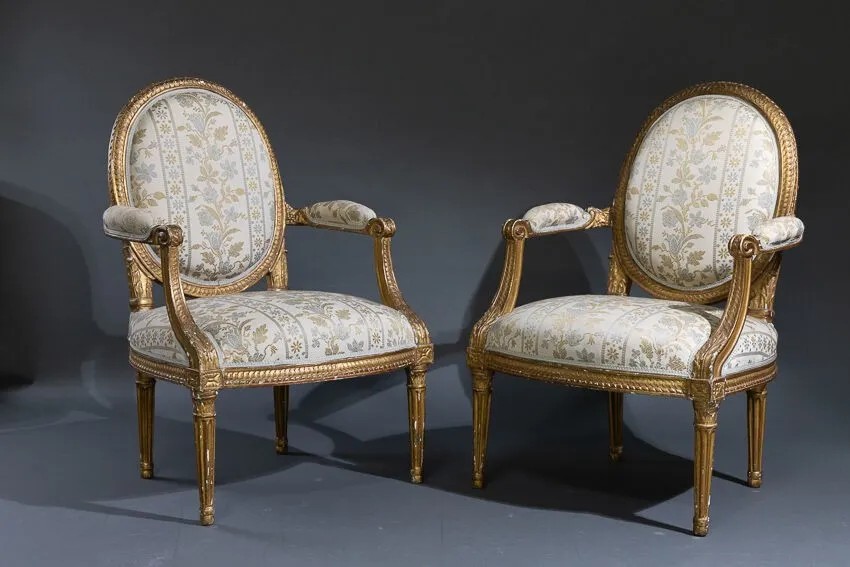 Valuation of a neay pair of wrought iron consoles in our next auction
Valuation of a neay pair of wrought iron consoles in our next auctionLe Floc'h auction house in Saint-Cloud, in collaboration with our experts specialized in free valuation and free appraisal will auction a near pair of French 20th century wrought iron consoles, Sunday 24th of November in Saint-Cloud.










Our teams in London and Paris are available to meet your needs whether you want to buy, sell or know the value of your works of art.
News releases

During an inheritance, it is likely that you discover a cross, a medal or a plate that had been attributed to one of your ancestors. These decorations are not mere memories, which often we do know what to do except put them in a drawer, some are worth a small fortune and are sought by collectors.
Small tour of Russian orders and cross awarded before 1917.
The Order of St. Andrew
Traditionally reserved for royalty, it was created in 1698. Less than 1000 crosses of St. Andrew were awarded.
Main Illustration courtesy of SVV Damien Libert
The Order of the White Eagle
Created in Poland in 1705, it is incorporated to the Russian orders in 1831.

Courtesy of SVV Osenat
The order of St. Catherine
It was created for women in 1714 by Emperor Peter the 1st; generally the entourage is composed of diamonds and not of rhinestones. Two classes, consisting of a cross and plate for the first one and the second with the cross only.

Courtesy of SVV Tajan
The Order of St. Alexander Nevsky
It consists of a plate with a cross. It is rare to find the two in the same hands.

Courtesy of SVV de Maigret
The order of St. Anne
The order becomes Russian in 1796. It is certainly one of the most frequently encountered, noted that this order had 5 classes that do not have the same prices.

Courtesy of SVV de Maigret
The Order of St. Stanislas
It was created in Poland in 1765 and integrated with Russian orders and decorations in 1831. It includes, Grand Cross, Commander with or without crown surmounting the cross and Knight.

Courtesy SVV de Maigret
The Order of St. George
Founded in 1769 by Catherine the 2nd of Russia, it includes, Grand Cross, Commander with plaque, Commander and Knight.

Courtesy of SVV de Maigret
The Order of St. Vladimir
Founded in 1782 by Catherine the 2nd, it includes, Grand Cross, Commander with plaque, Commander and Knight.

Courtesy of SVV de Maigret
The crosses and Russian medals are distinguished by the use of colored glass and enameled plates at their center, they are usually gold, silver gilt or silver, and some are embellished with gemstones particularly diamonds.
The value of a Russian decoration also depends on the place of production; was it executed in Russia by a local goldsmith or is it a European production, English for example. Obviously, the most popular are those produced in Russia.
The price range is wide, around £500 for the most common such as the cross of St. Anne to tens of thousands of pounds for the crosses and rarest plates such as an Order of St. Alexander Nevsky sold more £80,000 in 2015 in Paris.


 +33 6 95 34 93 78
+33 6 95 34 93 78

